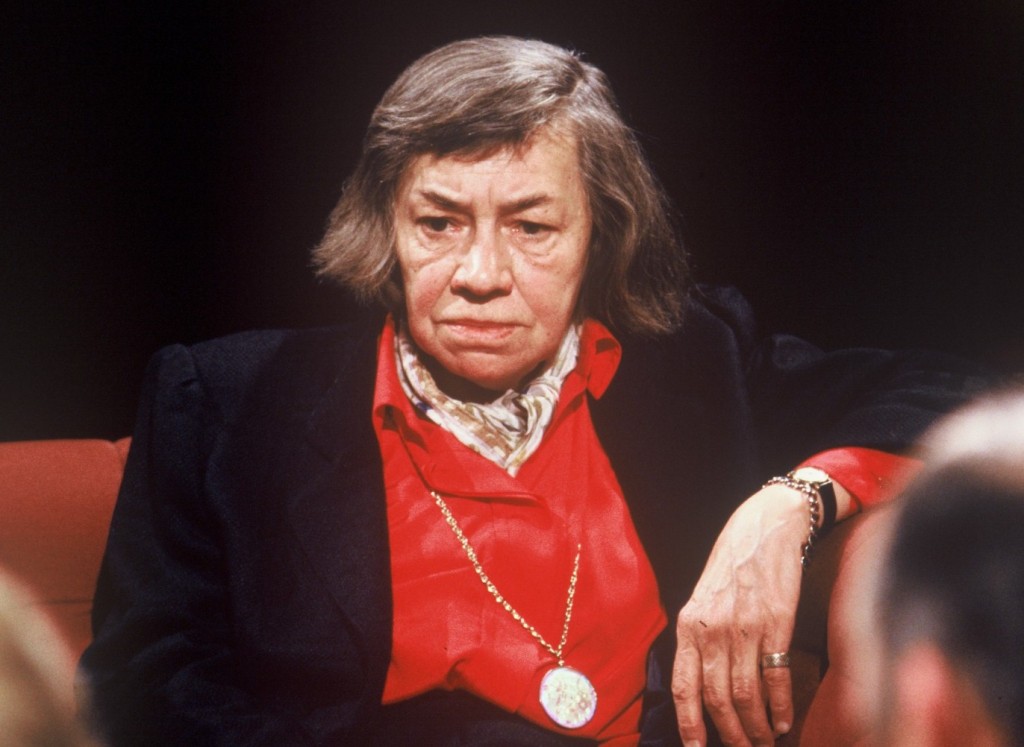Andrew McAleer is the author of 101 Habits of Highly Successful Novelists and co-editor (with Gay Toltl Kinman) of the mystery anthology Edgar & Shamus Go Golden. He tells us that he recently completed two books featuring his father John McAleer’s Golden Age detective Henry von Stray. See A Casebook of Crime (Volumes 1 and 2), forthcoming from Level Best Books. He is also at work with Gay Toltl Kinman on two mystery anthologies: Shamus & Anthony Commit Capers (Level Best Books) and Agatha & Derringer Get Cozy (Down & Out Books). Previously Andrew has contributed posts to this site about Edward D. Hoch (May 2023), Rex Stout (July 2023), James M. Cain (September 2023), and tips from a variety of famous mystery writers (January 2024). Here he shares his interview and some of his correspondence with Mystery Writers of America Grand Master and Columbo cocreator William Link. William Link and his longtime coauthor Richard Levinson made their fiction debut in EQMM when they were still teenagers, so we’re sure EQMM readers will be interested in William Link’s reflections on a stellar writing career.—Janet Hutchings

The Ellery Queen Award-winning writing duo of William “Bill” Link and Richard “Dick” Levinson remains perhaps the most successful television and crime- writing team of all time. As crime fiction scholar William L. DeAndrea noted in his Edgar-winning Encyclopedia Mysteriosa, “Levinson and Link parlayed mutual passions for mysteries, magic, and writing into the most honored and productive collaboration in TV history.”
A few of the Levinson-Link blockbuster television creations include: Murder, She Wrote, Columbo, and Ellery Queen. Okay I better mention their eight-season running private eye series, Mannix and their script writing for Alfred Hitchcock Presents, Honey West, and The Fugitive. Major literary awards include multiple Edgars, Emmys, Golden Globes, and Peabody awards.
After Levinson’s death in 1987, Link showed no signs of slowing down. He continued to produce, write, attend Malice Domestic and International Thriller Writers events, produce plays, serve as president of the Mystery Writers of America (MWA), and still found time to grow tomatoes with his wife Margery. In 2010, he received Malice Domestic’s Agatha Christie Poirot Award and, in 2018, he was honored by the MWA with its prestigious Grand Master title along with fellow mystery writing greats Jane Langton and Peter Lovesey.
In 2007, I wrote Link and asked if he would consent to an interview; he graciously agreed. The interview was released in the Fall 2007, Volume 9, No. 2 issue of Crimestalker Casebook and appeared under the title “Ten Questions for William Link.” Here, the future Grand Master of Mystery discussed, among other things, his early days with friend Dick Levinson, a luncheon with the master of suspense Alfred Hitchcock, and novel writing versus screenwriting.
Only a handful of issues containing the William Link interview were printed and fewer distributed. His responses are too good and important to hide from history. Now, thanks to EQMM’s “Something is Going to Happen,” its readers get a rare glimpse into the brilliant mind and career of one of crime fiction’s most ingenious and kindest creators.
* * *
McAleer: You were friends with fellow writing companion and Columbo co-creator Dick Levinson since junior high school. Do you recall your first writing idea with Dick?
Link: Dick and I met in 1946 and started collaborating almost immediately. Much sand has gone through the hourglass since then, but I believe our first writing project was a parody of the then quite popular radio show, “Dragnet.”
McAleer: I read in a biography of Columbo star Peter Falk in the 1963 Celebrity Register, where Falk says that he failed out of Hamilton College because he did most of his studying in the poolroom. I noted in some of the Columbo films how Falk shoots a nice game of pool. Was this Falk taking some license here or did you and Dick give Columbo this talent?
Link: Peter is an excellent pool player. He and John Cassavetes had their own Rat Pack, playing pool around town at night. We never had to fake Peter’s playing on the show. He’s also an excellent charcoal artist. (Author’s Notes: Falk’s right eye was surgically removed when he was three. Cassavetes guest starred in the Columbo episode “Étude in Black,” 1972.)
McAleer: What do you imagine Dick might think of modern mystery novels that seem to contain more romance than mystery?
Link: I don’t think Dick would have condemned mixing romance with mystery if it was done with style, good writing, and cleverness. Romance overwhelming the mystery element is another matter.
McAleer: Dick and yourself also worked on the Ellery Queen TV series staring Jim Hutton as Ellery Queen, and one of the more interesting contributors to the show was a great actor named David Wayne (who, among many other roles, played the Mad Hatter villain on Batman). Did you ever get a chance to meet Wayne?
Link: Dick and I produced the Ellery Queen series, so we knew David Wayne in our working relationship. He was lovely, charming guy, a total pro.
McAleer: When you and Dick brought Mannix to the scene did you have Mike Connors in mind for the role of Joe Mannix?
Link: We sold the Mannix concept to Desilu, wrote the pilot, and didn’t hang around. Paramount TV cast Mike Connors. Never met him on the show, but bumped into him years later at Chasens. (Then an excellent L.A. restaurant). We were mutually complimentary. (Author’s Note: In a 2013 email from Bill he told me Mannix was his and Dick’s first big hit and occupies a special place in his heart.)
McAleer: Your new play “Columbo Takes a Rap” stars Chicago-based actor Norm Boucher and the New York Post tells us that it is already playing to sold-out houses. Can we expect to see Columbo on Broadway or perhaps even abroad?
Link: My new Columbo play was a hit at the International Mystery Festival in June. At the present time the producer is thinking of opening it in London or possibly here in L.A.
McAleer: Do you create differently when writing a novel as opposed to a screenplay?
Link: Writing a novel is a totally different experience than writing a screenplay. In movies, we have directors, music composers, editors, etc. to flesh out our vision. The really difficult thing in writing screenplays is that everything has to be externalized, unlike novels where you can get inside people’s heads, especially in your protagonist’s if you are writing a first-person narrative. Usually novelists are lousy screenwriters because it requires a different set of muscles. You cannot stretch out in a screenplay; everything needs a careful and creative concision.
McAleer: You once had lunch with Alfred Hitchcock. Can you scoop us on any details here like who picked up the tab?
Link: We once had a three-hour lunch with the Master of Suspense in his bungalow at Universal. He was then approaching eighty and so obese it was hard for him to get up from the sofa. Writing-wise, he said that when you use coincidence it must occur early in the script and never again. Always go for the big, important scenes even if they defy logic. That was the basis for his “Refrigerator” theory. While the movie-goer is making a sandwich at midnight after having seen his new thriller, he realizes the big wheat field scene with Cary Grant in “North by Northwest” makes absolutely no sense. Doesn’t matter, Hitch told us—by then I have the man’s money! The lunch was ordered by Hitchcock, the same for him and us: salad, steak, ice cream, black coffee. If you were a smoker you had one of his favorite cigars, a Cuban H. Upmann. Whether you smoked or not, you couldn’t refuse Mr. Hitchcock. Of course, no check.
McAleer: What is your assessment of Georges Simenon’s Maigret stories?
Link: Simenon is one of my favorite authors and I have read over two hundred of his books in translation. I enjoy the Maigrets, but much prefer his stand-alone, psychological novels. Simenon described the Maigrets as pencil drawings and the other as oil paintings. Very accurate analogy. Gide and Sartre considered Simenon France’s greatest existentialist. I concur. For new readers I recommend “Dirty Snow,” which is out in a new translation in paperback. In my opinion this is maybe his best novel. He wrote over five hundred books in a half-century of intense writing. A typical Maigret was written in a three-day stint!
McAleer: What do you have cooking on the literary burner now?
Link: I just sold three short stories to the Hitchcock and Ellery Queen Mystery Magazines and have finished my fourteenth stage play, “Candidate for Murder.” The later is a very subversive whodunit set in Washington. It doesn’t play politics, but hopefully dances on the nerves and the deductive acumen of its audiences.
Post Script
Bill ended the interview this way, “Andy—I hope this suffices. I could go on and on, especially about Hitchcock and how we found the novel for his last movie, “Family Plot,” but that’s another story.” (Author’s Note: Why I never took out a page from Columbo’s book with “Just one more question” on what promised to be an amazing behind-the-scenes look into Hitchcock’s last film remains a mystery.)
* * *
William Link passed away on December 27, 2020 at the age of 87. When learning of Bill’s death his friend Steven Spielberg, who directed the first Columbo episode “Murder by the Book,” paid tribute to “Bill’s good nature” and for Dick and Bill giving him a “huge break” as a “young and inexperienced director.” (Variety)
Bill’s kindness didn’t end with season one of Columbo; it was a constant in my book. When I told him I was coediting my first crime-fiction anthology Coast to Coast: Murder from Sea to Shining Sea with my own literary partner Paul D. Marks, Bill readily agreed to contribute a short story, “Murder Medium Rare”—one of his favorite EQMM contributions, he told me. And when I asked him to contribute writing tips to my book the 101 Habits of Highly Successful Novelists, he agreed without hesitation. I even received a nice note from Bill (who also served in the Army) while I was deployed in Afghanistan wishing me safe passage. I received another welcoming note after my return.
On Sunday nights while Columbo aired across the nation Bill and I would occasionally exchange emails about this week’s exciting Hollywood-legend guest star such as: Jack Cassidy, James Gregory, Richard Anderson, or Dick van Dyke. I’d always receive a fun response from him or even a, “We are watching it now!” (With wife Margery.)
Looking back, the notion that I could email back and forth with a cocreator of Columbo while episodes of the iconic detective aired prime-time seems surreal. Considering Bill’s thoroughly good nature, however, it really shouldn’t. If he were here today, I’d like to tell him just one more thing, “We’re all still watching prime-time, Bill. . . .”











